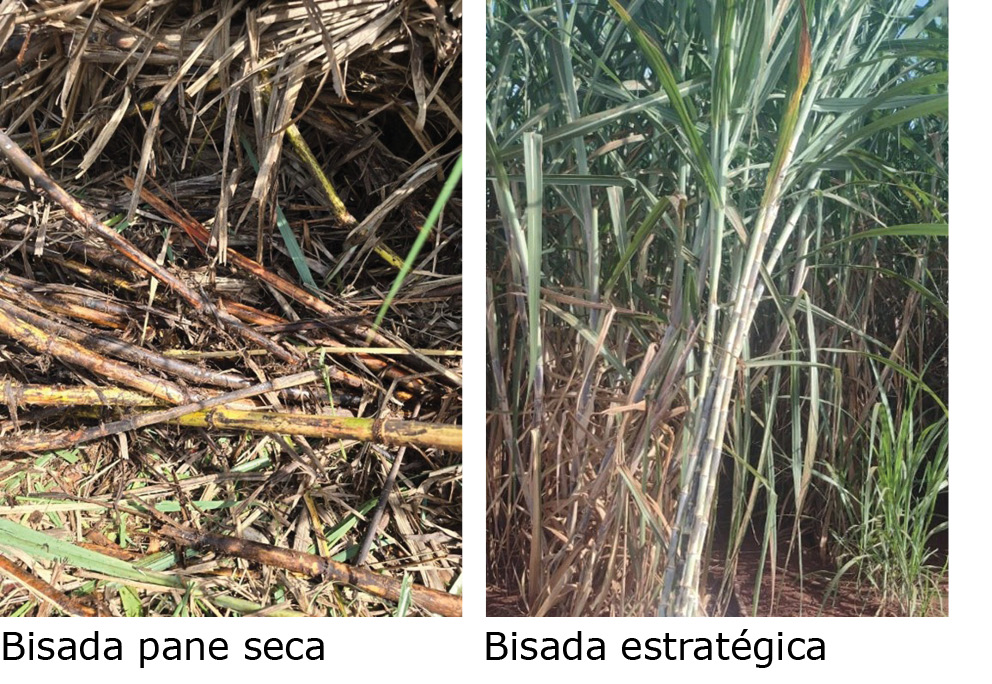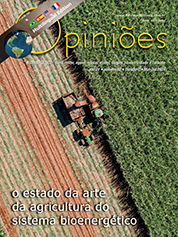Michel da Silva Fernandes
Diretor da MS Fernandes Consultoria Agrícola
OpAA80
Bisar ou não: decisões a serem tomadas
Este artigo explora a complexa relação da produção de cana-de-açúcar e a necessidade de bisar a matéria-prima. Oferecendo insights valiosos para produtores e pesquisadores interessados em compreender os desafios da produção de cana bisada, visa-se explicações sobre o tema de sanidade e as consequências na indústria.
O Brasil é o maior produtor mundial de cana-de-açúcar e tem uma história de produção crescente ao longo dos últimos anos, impulsionada principalmente pela demanda interna por etanol e açúcar, bem como pelo aumento das exportações. Dentre as diversas estratégias necessárias para produção canavieira, uma que vem tomando a atenção de produção é o processo de bisar cana-de-açúcar.
O Brasil é o maior produtor mundial de cana-de-açúcar e tem uma história de produção crescente ao longo dos últimos anos, impulsionada principalmente pela demanda interna por etanol e açúcar, bem como pelo aumento das exportações. Dentre as diversas estratégias necessárias para produção canavieira, uma que vem tomando a atenção de produção é o processo de bisar cana-de-açúcar.
Essa atenção vem do fato que, em 2023, por conta do avanço do manejo e alto volume de chuvas, a produtividade das usinas e fornecedores foi, em grande maioria, superior ao histórico, o que gerou um processo de planejar o processo de bisar cana-de-açúcar. Um ponto de atenção é que o último grande momento, em volume de toneladas pelas usinas de canaviais bisados foi em 2009, no qual foram observados volumes de mais de 2.000 mm de precipitação na safra por exemplo em Frutal/MG (historicamente se tem um volume de aproximadamente 1.150 mm).
Assim, este artigo está organizado em descrever de fato o que seria uma cana bisada e quando é mais comumente utilizada essa estratégia. Posteriormente, explanados o como e as consequências agronômicas de se realizar esse processo e como tratá-lo. Por fim, os reflexos dessa decisão em questão de produção industrial e qualidade tecnológica.
Fator crítico: bisada “pane seca” vs bisada estratégica: A cana bisada tem ganhado destaque devido aos acontecimentos que culminaram em um grande volume dessa categoria de canavial na safra 2023/24. Devido a uma safra considerada recorde por diversas processadoras, algumas não obtiveram a capacidade técnica ou operacional de moer toda a matéria-prima durante o ano safra, sendo forçadas a optar pela estratégia de bisar. Existem usinas que utilizam bem dessa técnica para ganhar produtividade em canaviais menos produtivos, porém, essa não é uma prática muito utilizada em termos gerais por conta da complexidade em torná-la rentável.
De maneira simplificada, um canavial bisado é aquele que, por estratégias ou necessidades da usina, atravessa uma safra sem a colheita realizada, sendo então processado pela indústria em um período maior de campo, porém fora do convencional da planta. Esse evento acarreta uma série de impactos, como o maior período de maturação da cana-de-açúcar, o qual designa em maior teor de fibra, a criação de um ambiente propício à proliferação de fungos, alterações na composição químico-tecnológica do caldo de cana, como elevadas concentrações de compostos fenólicos e amido, entre outras. No entanto, pontos positivos também são observados, sendo um deles um aumento de produtividade em planos bem traçados e executados.
Canaviais bisados de maneira consciente e com parâmetros para realização são chamados de bisadas estratégicas. Essas são as lavouras nas quais itens são avaliados e calculados para que os canaviais se tornem os mais rentáveis possíveis. De maneira técnica, um canavial pode chegar a ser mais produtivo em níveis de 30% em TCH (tonelada de cana por hectare) se comparado com uma colheita no ano safra atual versus ano safra seguinte, quando todos os pontos são bem avaliados. Assim, considerar esses fatores é realmente importante para se tomar uma decisão que culmine no sucesso do grupo.
De maneira oposta, quando as estratégias não são bem claras e a decisão é tomada de maneira compulsiva, chamamos de bisada pane seca. Essas são lavouras nas quais a decisão foi tomada já tarde, sem a total avaliação dos fatores condicionantes do sucesso produtivo e que culminam em diversos problemas para a safra seguinte. Um canavial bisado sem tomar as devidas precauções pode apresentar uma perda em TAH (tonelada de açúcar por hectare) na casa de 60%, trazendo prejuízos econômicos, agrícola e industriais, fazendo com que mais produtos sejam necessários para o processo industrial.
Todas as consequências devem ser avaliadas quando se tornar necessária a condição de bisar. Assim, para se bisar uma lavoura, deve-se realizar uma classificação bem dimensionada considerando diversos aspectos. No que tange à organização agronômica da produção sucroenergética, os pontos cruciais para classificar o canavial a ser bisado são:
• Produtividade: Para se bisar um canavial, o melhor seria aquele de menor produtividade na safra atual e com menor porte. Esses pontos garantem um não tombamento, entre outros.
• Aplicação de tecnologias: Outro fator é já manejar o canavial a ser bisado com produtos que tratem as grandes dificuldades de canas bisadas, doenças e pragas.
• Maturação e Qualidade do canavial: De fato, avaliar como está o canavial já nos aspectos tecnológicos pode garantir uma maior qualidade no momento de colheita posterior.
 Tomada a decisão de bisar, temos então possíveis consequências sobre o canavial. O maior período de cultivo pode ter reflexos negativos sobre a qualidade da matéria-prima, devido à maior exposição a pragas, doenças e intempéries climáticas, e a condição de criação de microclimas propícios ao desenvolvimento de patógenos.
Tomada a decisão de bisar, temos então possíveis consequências sobre o canavial. O maior período de cultivo pode ter reflexos negativos sobre a qualidade da matéria-prima, devido à maior exposição a pragas, doenças e intempéries climáticas, e a condição de criação de microclimas propícios ao desenvolvimento de patógenos. Esses pontos podem causar a depreciação da matéria-prima, favorecendo a podridão do material e a elevação do custo industrial para produção dos produtos finais. Outro ponto é o fato de o alongamento do período de campo propiciar a presença de tecidos mais velhos e fibrosos. A presença de fibra na cana bisada pode impactar significativamente a produção de açúcar. A fibra extra pode dificultar a extração do suco de cana durante o processo de moagem, afetando a eficiência e o rendimento da produção de açúcar.
No contexto da produção de etanol, a fibra na cana bisada também desempenha um papel crucial. A maior quantidade de fibra pode influenciar a eficiência da fermentação, afetando a taxa de conversão de açúcares em etanol. Além de consequências industriais, a estratégia de bisar motiva a atenção agrícola para diversos pontos.
Assim, para os consultores da MS Fernandes, é necessário compreender a necessidade principalmente de colheitas de canaviais bisados. Para isso, uma classificação precisa das lavouras bisadas deve ser feita, no qual os itens primordiais para avaliar são, em ordem de importância:
1. Florescimento,
2. Tombamento com favorecimento a pragas e doenças,
3. Variedades,
4. Pragas e doenças,
5. Daninhas (C4), e
6. Risco de incêndio ou restrição.
Ou seja, em nível de importância, a colheita deve seguir tais fatores para diminuir os prejuízos desse processo. Fechando então essa passagem, temos que canaviais bisados merecem uma atenção especial antes do fato e posterior à decisão.
O manejo correto pode garantir uma qualidade positiva para a colheita no ano seguinte e assegurar uma corrida produtiva com caminhos limpos e claros para o grupo e produtores.




